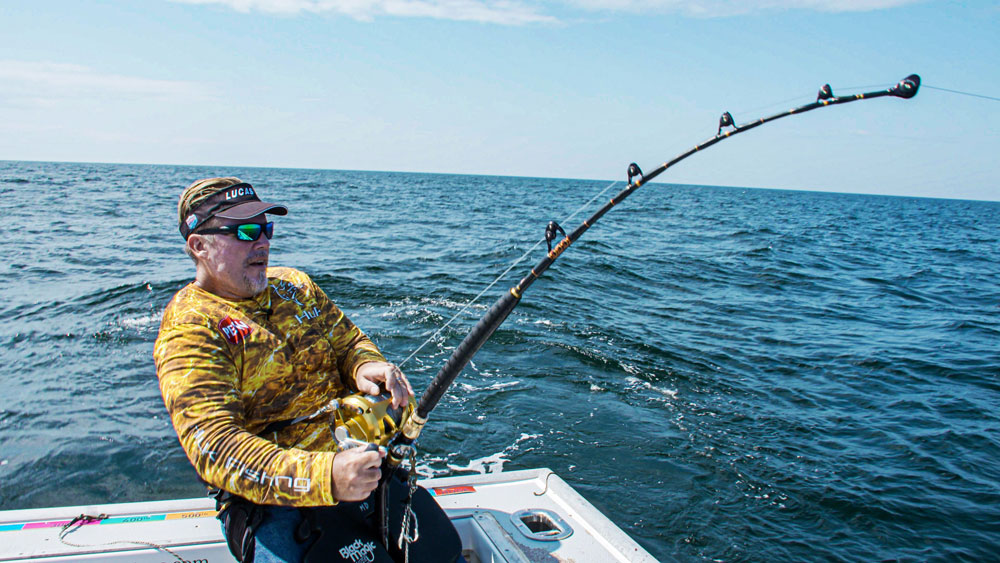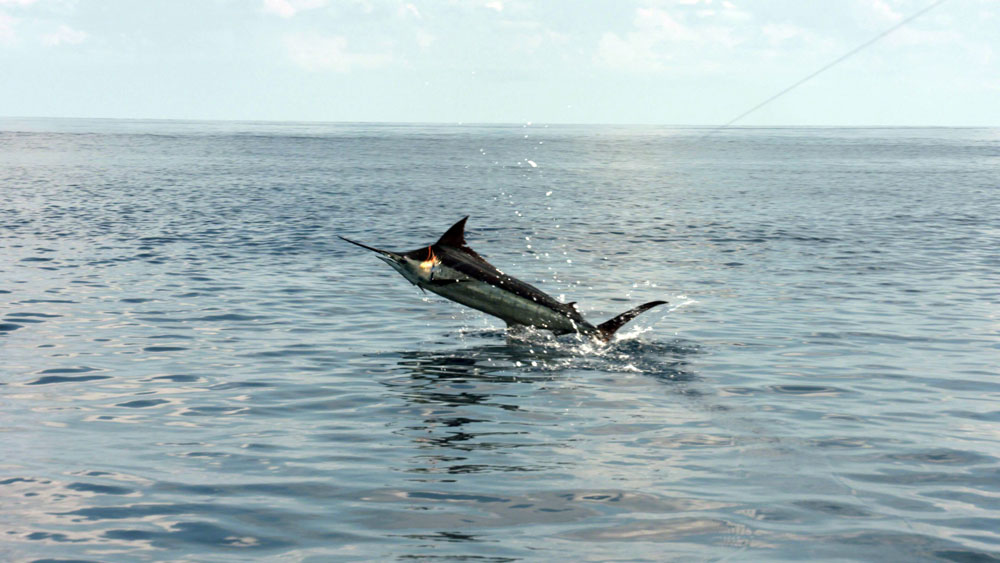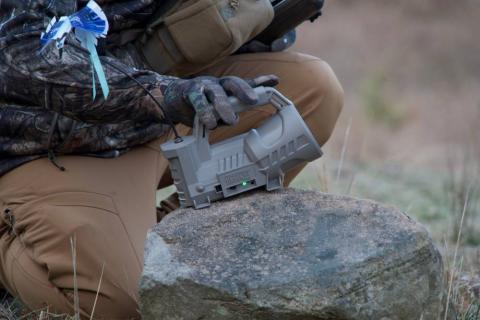with Mark Davis

Mossy Oak Fishing hasn’t featured Mark Davis of Lexington, South Carolina, lately because he’s been flying all over the world, chasing different species of offshore and inshore saltwater fish. Mark is the host of “BigWater Adventures” on the Outdoor Channel the first and second quarters of the year and on the World Fishing Network all year long. He fishes for everything that swims in salt water from Alaska to Australia - generally 50 species. One of his favorite fish to catch is marlin.
There are several species of marlins – blue, black, striped, white and more than these four species. However, these four are the ones most blue-water anglers go after in the U.S. To be honest, only a few black marlin are caught from the main U.S. coastlines. The black marlin is primarily caught south of the U.S. Both the black and the blue marlin can weigh well over 1,000 pounds each. But the black and blue marlin I fish for average 250-500 pounds, although I have caught blues and blacks that weigh from 500-600 pounds. My biggest marlin was a blue marlin.
My favorite place to fish for marlin is at the Tropic Star Lodge in Panama, located near the Darien Jungle on the Pacific Coast and accessible only by airplane and then boat. This lodge has had more IGFA fishing records caught there than anywhere else.
Marlin are pelagic fish that follow the bait fish wherever the bait fish go – even if it’s 10,000 miles away in 1-1/2 months from where you’ve caught a marlin. The secret to catching marlin is to get to a place when the water temperature is right for the marlin. Blue marlins are more of an open-water fish that follow the bait along breaks and riffs. You can catch blacks in these same areas, however, blacks prefer to hang around reefs.

The reason that Tropic Star Lodge is such a great location to catch blacks and blues is because the range of these two kinds of marlin seem to converge at this same location, at the same time of year. Although you probably can catch a blue marlin in any month of the year at Tropic Star, there are some months that are more productive than others. However, during the fall and winter – November, December, and also January and February – both the black and blue marlin seem to concentrate in the Tropic Star region when the water temperature’s right and the bait fish abundant. Catching a blue marlin and a black marlin in one day isn’t that unusual. So, if marlin is on your bucket list, and you want to try and catch the four main species of marlin, Tropic Star is the best place I know in the fall and winter to catch both black and blue marlin. You may find the blacks and the blues within 15-20 miles of each other or perhaps even closer. This region is known for having the most months to fish for and catch black and blue marlin during a calendar year.
Blue marlins have been caught there every month I’ve ever fished at Tropic Star, including March – September, which aren’t even the best times to fish there. Tropic Star is located on the western side of Panama in Pinas Bay. When you’re fishing at Tropic Star, you’re only about 20-30 miles from the country of Colombia. There’s a 20-mile area out from the Tropic Star resort where only the locals and sports fishermen can fish, so there’s very little fishing pressure on the marlin.
To get from the U.S. to Tropic Star involves very long airplane and boat rides. But I think it’s as close as you can get to fishing waters that are unpressured. Plenty of sport fishing takes place there – primarily catch and release. The famed author, Ernest Hemingway, once fished out of the Tropic Star area, as well as did western writer, Zane Grey. Guy Harvey, the famous saltwater artist, spends about 6 months of each year there. If you look on any ranking of the greatest sport-fishing places in the world, Tropic Star always is in the top 10 or top 20.
This year is my ninth year to film at Tropic Star, and I don’t know many serious sports fishermen who haven’t fished there. Tropic Star’s claim to fame is that the lodge there pioneered the use of bridling live baits to catch marlin. The anglers at the lodge still pull plastic baits, but the lodge is known more for pulling live baits for marlin.






























